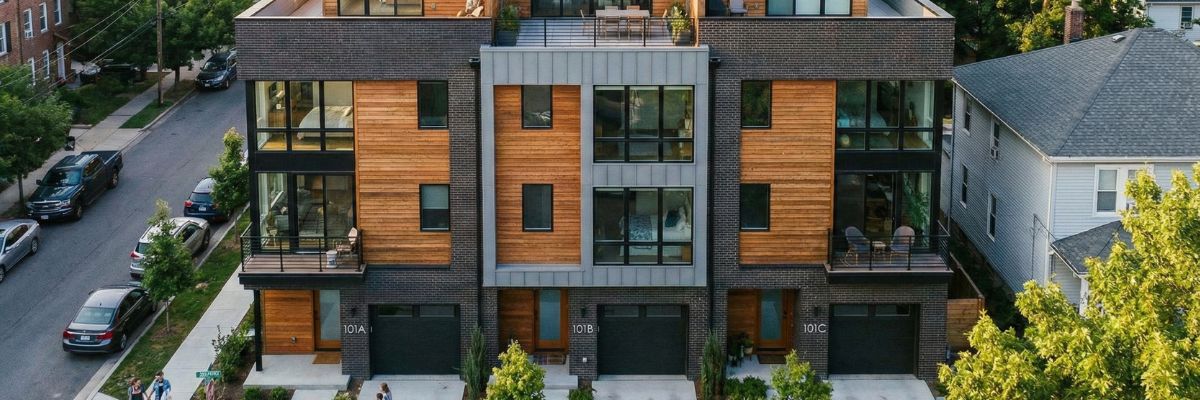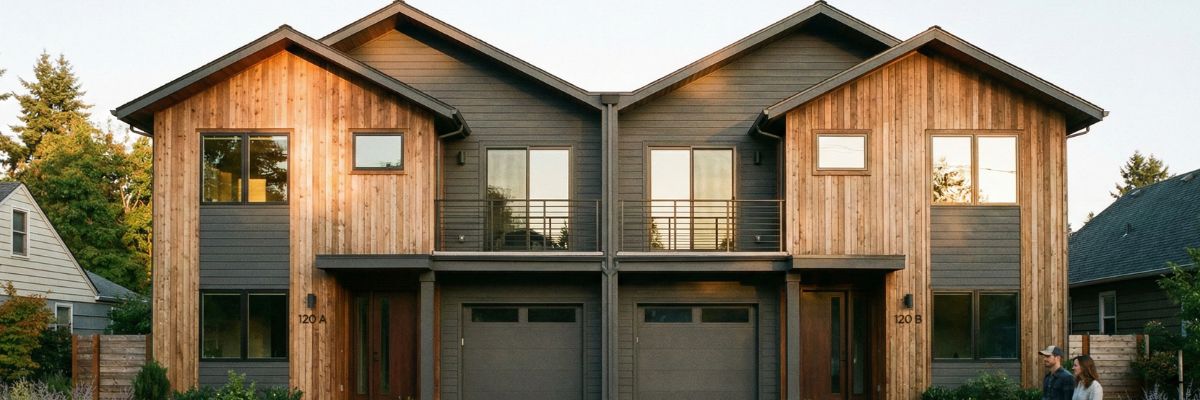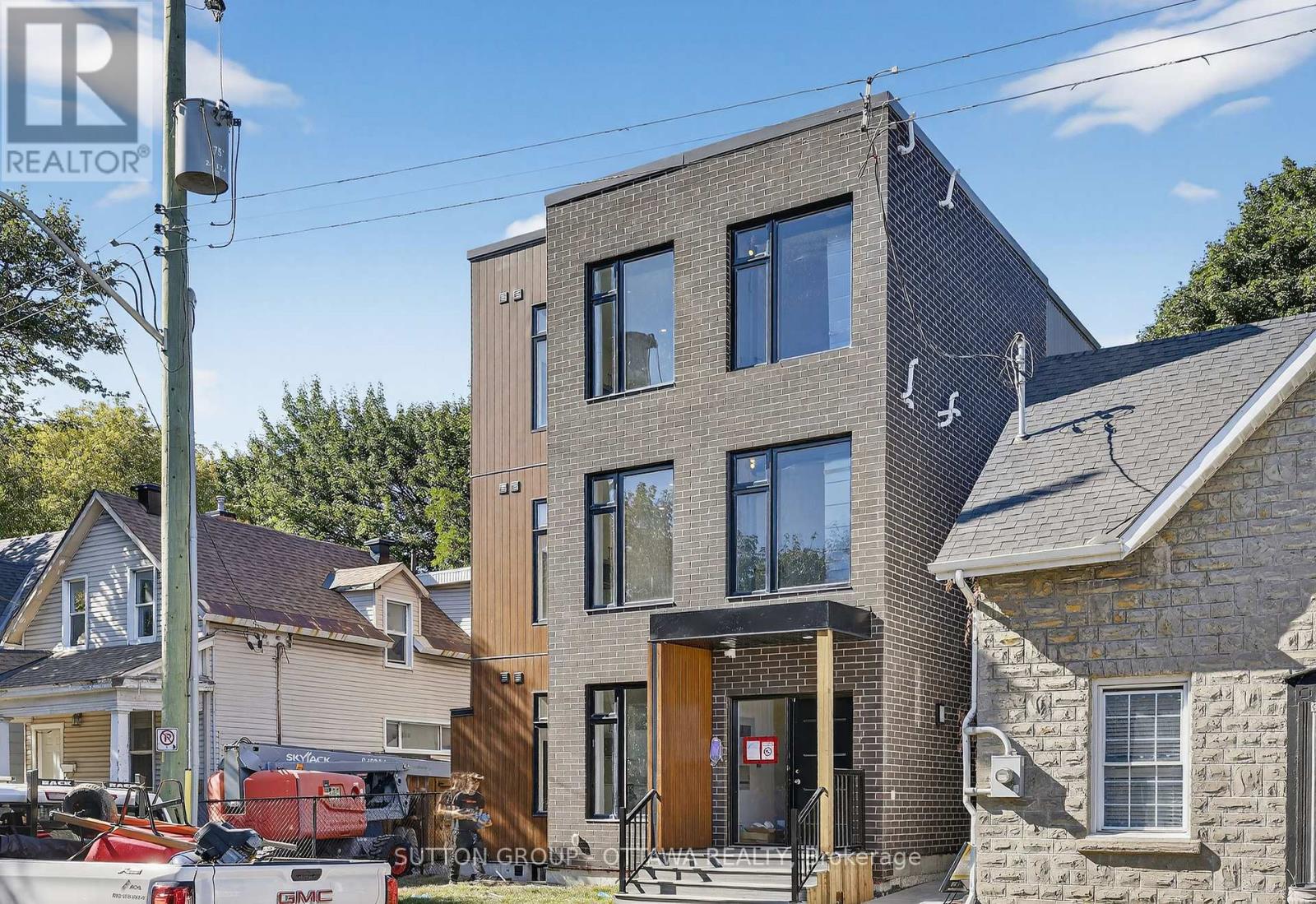What Is A Custom Home
A custom home is a uniquely designed residence that is created around the owner’s specific needs, lifestyle, and aesthetic preferences, offering complete control over the layout, finishes, and structural features in a way no spec or production home can match.
Unlike standard plans built for mass appeal, a custom home reflects intentional choices about how the owner wants to live, how the home should perform over time, and how every space should look and feel. By understanding what defines a custom home, how the process works, and how it differs from other forms of new construction, buyers can make an informed decision about whether a fully personalized build aligns with their goals, timeline, and investment priorities.
.jpg)
What Defines a true Custom Home?
A custom home is designed from the ground up for one specific client rather than built for the general market. Instead of selecting from predetermined plans, the owner collaborates with a builder, architect, or home designer to shape every major detail. This includes the floor plan, room sizes, exterior form, finishes, mechanical systems, and even the orientation of the home on the lot. The result is a one of one residence that supports the owner’s lifestyle today while accommodating future needs.
A Unique Design Tailored to the Owner
Custom homes differ from other builds because they are not mass produced. The shape, size, structure, and architectural character are created with the owner’s vision in mind. Whether the goal is a minimalist modern home, a classic farmhouse, or a design that blends multiple styles, the finished product is an individualized interpretation of the client’s preferences. Every detail can be altered to match function and taste. Windows can be placed to frame specific views, room dimensions can shift to support furniture layouts, and specialty spaces such as home offices, gyms, wellness rooms, or multigenerational suites can be incorporated seamlessly.
Deep Owner Involvement at Every Step
One of the defining characteristics of a custom home is the level of owner participation. Instead of reviewing a short list of choices, the client influences nearly every decision. This includes working with the builder to choose the lot, evaluating how the home should sit on the site, selecting structural elements, deciding on energy efficiency strategies, and guiding all interior and exterior finishes. The owner is involved from initial concept through final inspections, giving them a level of control that spec or tract homes cannot offer.
Built on Individually Selected Lots
Custom homes are usually constructed on unique lots chosen by the owner. These may include infill locations, rural acreage, sloped properties, or distinctive sites where standard production plans would not fit well. Because each lot is different, the home must be designed to respond to its surroundings. For example, the layout may be shaped to maximize natural light, maintain privacy, or work around important site features. This adds both complexity and opportunity, creating a final product that feels integrated with the land.
How Custom Homes Differ From Spec Homes
Although both are new construction, custom homes and spec homes operate from opposite ends of the design and decision-making spectrum. Understanding these differences helps buyers determine which type of build best suits their needs, expectations, and involvement level.
Who Makes the Decisions
In a spec home, the builder chooses almost everything before the buyer becomes involved. The goal is to create a broadly appealing product that sells quickly. In a custom home, the owner directs the choices with input from the architect and builder. This includes floor plan design, structural features, finishes, and energy performance strategies. Instead of being offered a set of preselected materials, the owner selects from the full range of available products and systems.
Design Flexibility and Structural Control
Spec homes typically allow only cosmetic adjustments, and only if the buyer enters early in construction. Custom homes provide flexibility at every level. Owners can adjust ceiling heights, room counts, window placement, foundation shape, rooflines, and specialty rooms. Mechanical systems such as HVAC, insulation strategies, water treatment, and smart home technology can be upgraded as needed. This level of flexibility ensures the home meets both current and long-term lifestyle goals.
Differences in Cost and Timeline
Custom homes generally take longer and cost more per square foot than spec homes. Timeline increases because of design work, engineering, client decision-making, and non standard details. Costs rise because custom builds often use higher quality materials, advanced mechanical systems, and unique architectural features that require more labor and expertise. However, the investment can create a home that performs better, lasts longer, and avoids the need for major future renovations.
Advantages of Building a Custom Home
The benefits of a custom home extend beyond aesthetics. For many owners, the long term performance, comfort, and lifestyle fit justify the time and cost associated with building something uniquely tailored.
Personalized Layout and Functionality
Custom homes allow owners to shape the flow of the home around their daily routines. Someone who works from home can design a quiet, private office. Families can incorporate generous storage, mudrooms, and gathering areas. People who entertain may prioritize open kitchens, large dining areas, or seamless indoor to outdoor transitions. The design can also support multigenerational living through in law suites, separate entrances, or flexible shared spaces. Every room is designed with purpose instead of being forced into a predetermined plan.
Quality, Durability, and Performance
Owners who build custom homes can prioritize materials and systems that support longevity and lower operating costs. This includes upgraded insulation, high performance windows, efficient HVAC systems, and durable exterior materials. Custom builders often work with skilled trades that specialize in complex details, improving craftsmanship throughout the home. These choices increase comfort while reducing long term maintenance and energy expenses.
Long Term Fit and Resale Value
A well designed custom home tends to age gracefully because it is built for the specific site and tailored to the owner’s lifestyle. This reduces the need for significant renovations later. On the resale market, unique and well executed custom homes often stand out from nearby properties, attracting buyers who appreciate thoughtful design and quality construction. While personal taste influences resale value, strong architectural character and functional layouts typically hold long term appeal.
Is a Custom Home the Right Choice for Your Situation?
Choosing a custom home depends on your priorities, timeline, and willingness to participate in the design and construction process. Buyers who want a home that aligns precisely with their lifestyle, who value high performance building features, or who have specific site requirements often find that a custom home is the best fit. It is also a strong option for those who see their home as a long term investment and want something that stands out from typical suburban offerings. However, custom homes require more involvement, more time, and a higher budget than spec or tract options. Those who prefer speed, simplicity, or predictable cost may find spec homes more suitable. When personalization and long term satisfaction outweigh the convenience of a quick move in, a custom home becomes a compelling and rewarding choice.

.svg)



.jpg)
.jpg)





